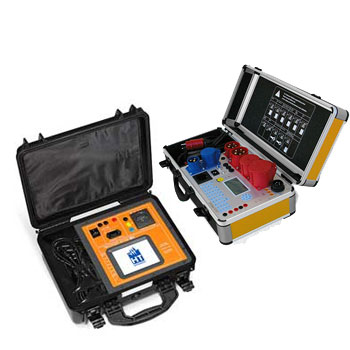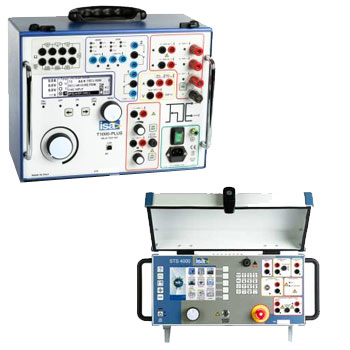- Connection between flange and thermowell in threadwelded design
- Model TW10-S: No directly wetted welded joints (standard)
- Model TW10-B: Additional weld seam on the process side (sealing joint)
- Coating for corrosive or abrasive process loads
- Possible thermowell forms: - tapered, straight or stepped - “Quill Tip” version (with open tip)
 Datasheet (Models TW10-S, TW10-B) Datasheet (Models TW10-S, TW10-B)
|
 Datasheet (ScrutonWell® design) Datasheet (ScrutonWell® design)
|
 User Manual User Manual
|
- Heavy-duty design
- Model TW10-F: Full penetration weld version Model TW10-P: With double fillet weld weld seam strength a = 3 mm Model TW10-R: With double fillet weld weld seam strength a = 6 mm
- Coating for corrosive or abrasive process loads
- Possible thermowell forms: - tapered, straight or stepped - “Quill Tip” version (with open tip)
- Welding process test to ASME Sec. IX
 Datasheet (Model TW10-F, Models TW10-P and TW10-R) Datasheet (Model TW10-F, Models TW10-P and TW10-R)
|
 Datasheet (ScrutonWell® design) Datasheet (ScrutonWell® design)
|
 User Manual User Manual
|
- Good price/performance ratio
- Wetted parts made of special material
- Non-wetted flange from 316/316L stainless steel
- Thermowell welded to one unit
- Possible thermowell forms: - tapered, straight or stepped - "Quill Tip" version (with open tip)
 Datasheet (Model TW10-P) Datasheet (Model TW10-P)
|
 Datasheet (Model TW10-F, Models TW10-P and TW10-R) Datasheet (Model TW10-F, Models TW10-P and TW10-R)
|
 Datasheet (ScrutonWell® design) Datasheet (ScrutonWell® design)
|
 User Manual User Manual
|
- International standard
- Possible thermowell forms: - tapered, straight or stepped - "Quill Tip" version (with open tip)
 Datasheet Datasheet
|
 User Manual User Manual
|
- Different dimensions for standardised welding sockets
- International standard
- Possible thermowell forms: - Design TW20-A: tapered - Design TW20-B: straight - Design TW20-C: stepped - “Quill Tip” version (with open tip)
 Datasheet Datasheet
|
 User Manual User Manual
|
- Materials and surface finish quality in accordance with the standards of hygienic design
- Fully welded
- Can be combined with models TR21-A and TR22-A electrical resistance thermometers, measuring insert exchangeable
- Can be combined with mechanical thermometers, resistance thermometers and DiwiTherm®
 Datasheet Datasheet
|
 User Manual User Manual
|
- Variable welding diameters
- International standard
- Possible thermowell forms: - Design TW25-A: tapered - Design TW25-B: straight - Design TW25-C: stepped - "Quill Tip" version (with open tip)
 Datasheet Datasheet
|
 User Manual User Manual
|
- Heavy-duty design
- Solid machined version without welding
- Possible thermowell forms: Design TW30-A: tapered Design TW30-B: straight Design TW30-C: stepped
- For lap flanges per ASME B16.5
 Datasheet Datasheet
|
 User Manual User Manual
|
- Version per DIN 43772
- Model TW40-8: form 2F, Model TW40-9: form 3F
- For highly corrosion-resistant coating
- With integrated neck tube
- Model TW40-9: fast-response design
 Datasheet Datasheet
|
 User Manual User Manual
|

Thermowells (Protection Tubes) – process protection & measurement reliability
Thermowells (also called protection tubes/immersion sleeves) protect temperature probes against pressure, flow, corrosion, and mechanical load—and allow sensor replacement under pressure without opening the process. Designs include straight, tapered, and stepped, manufactured as barstock or welded versions.
Process connections: threads (G/NPT), flanges per EN 1092-1 / ASME B16.5, clamp/hygienic (Tri-Clamp), and weld-in nozzles. Materials: 1.4404/316L, 1.4571/316Ti, duplex, Hastelloy®, Alloy 600, Monel®, titanium, optionally PTFE/PFA-coated.
ICS Schneider Messtechnik supports mechanical sizing (e.g., per ASME PTC 19.3 TW-2016), material selection, dimensioning, documentation/certificates, and integration into your measurement points.
FAQ on Thermowells (Protection Tubes)
Answers on designs, codes, immersion length, flow, materials, seals, hygiene, and calculations.
What are thermowells used for?
They isolate the medium from the probe, increase service life and process safety, and allow sensor exchange without draining or depressurizing the system.
Barstock vs. welded—what’s the difference?
Barstock: drilled from solid—high strength and flow resistance. Welded: tube plus welded tip—cost-effective for moderate pressure/flow regimes.
Straight, tapered, or stepped—how do I choose?
| Form | Advantage | Typical use |
|---|---|---|
| Straight | simple, robust | general duties, moderate flow |
| Tapered | better flow resistance, less vibration | higher velocities/pressure shocks |
| Stepped | faster response time | dynamic processes, small tip mass |
Which standards/codes apply?
For design/vibration check: ASME PTC 19.3 TW-2016. Dimensional guidance: DIN 43772. Flanges: EN 1092-1 / ASME B16.5.
How do I determine immersion length (U) and overall length (L)?
Choose U so the measuring point sits fully in the flow (rule of thumb: ≥ 1/3 of pipe ID or ≥ 50–100 mm beyond the wall). L follows from nozzle, seal, and connection geometry.
How does a thermowell influence response time?
More mass = slower response. Stepped tips, thinner walls, and thermal paste in the bore reduce t63/t90.
What pressure/temperature limits are typical?
They depend on material, tip thickness, temperature, and connection. Flange rating per pressure class; threaded nozzles per medium/load case. We provide calculation reports on request.
What is wake-frequency verification?
It verifies resistance to vortex-shedding vibration. The ratio of excitation frequency to natural frequency must remain in the safe zone (ASME PTC 19.3 TW-2016).
What input data do you need for sizing?
- Medium, density/viscosity, temperature, pressure
- Flow velocity or flow rate/pipe ID
- Material, form, unsupported length, tip diameter
- Process connection (thread/flange/clamp), seal type
Which process connections are available?
| Type | Examples | Notes |
|---|---|---|
| Threaded | G ½, G ¾, ½" NPT | compact, widely used |
| Flanged | EN 1092-1 DN25…DN50, ASME 150…600 | higher loads/sealing performance |
| Clamp/hygienic | Tri-Clamp 1½"… | food/pharma, CIP/SIP |
| Weld-in | nozzle | permanent seal, cost-efficient |
Which materials make sense?
| Material | Properties | Typical use |
|---|---|---|
| 1.4404 / 316L | corrosion-resistant, standard | water, many media |
| Duplex | higher strength, better pitting/crevice resistance | seawater, chlorides |
| Hastelloy® | excellent chemical resistance | chemicals, acids |
| Alloy 600 / Inconel® | high-temperature capability | furnace/exhaust |
| Monel® | resistant in fluor/alkali media | specialty chemistry |
| Titanium | lightweight, seawater-resistant | offshore, pharma |
How do I select bore size and fit?
Make the bore 1–2 mm larger than the probe OD for assembly clearance. Thermal paste or a spring-loaded insert improves thermal coupling.
Which sealing concepts are used?
Thread + seal (PTFE/graphite), flange gasket (e.g., kammprofile), clamp gasket (EPDM/FKM/PTFE), or welded joints for permanent sealing.
Are hygienic versions available?
Yes—Tri-Clamp, polished surfaces (e.g., Ra ≤ 0.8 µm), dead-leg-free transitions, and CIP/SIP resistance.
How should I position the thermowell in a pipe?
Place the tip in the flow center, keep distance to elbows/inserts, observe straight runs. At very high velocities consider angled installation or reduced U after verification.
Which tests/documents can we obtain?
On request: EN 10204 3.1 certificates, PMI, pressure test, surface PT, dimension report, WPS/PQR, material/welding dossiers.
Which coatings/linings are possible?
PTFE/PFA for non-stick/corrosion resistance; hard coatings for abrasion. Coatings affect heat transfer and must be considered in sizing.
How does flow velocity influence the design?
Higher velocity increases cross-force and vibration excitation. Tapered/stepped forms and correct unsupported length improve safety margins.
How do I integrate the sensor & connection head?
Bore to match probe OD, use spring-loaded inserts or compression fittings. Connection head Form B or M12 outlet. Optional head transmitter (4–20 mA/HART/IO-Link).
Do you support sizing & calculation?
Yes. We provide dimensioning, wake-frequency reports, material recommendations, drawings and documentation—tailored to medium, pressure, temperature and flow.





















































































































































































